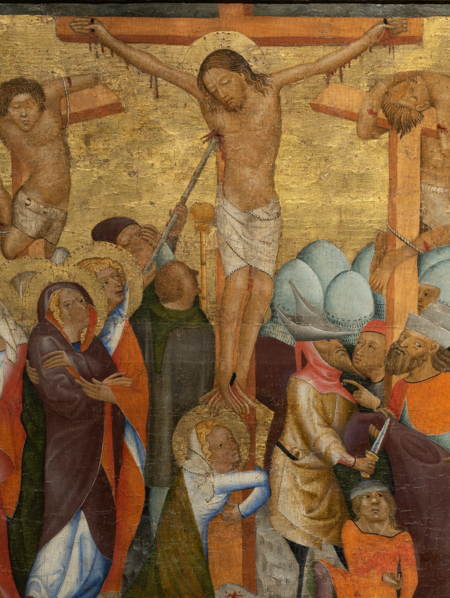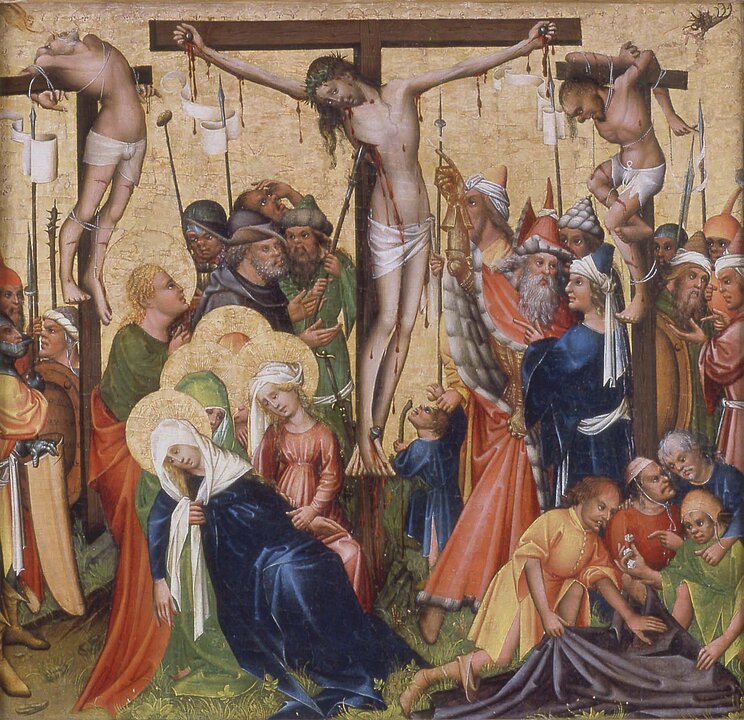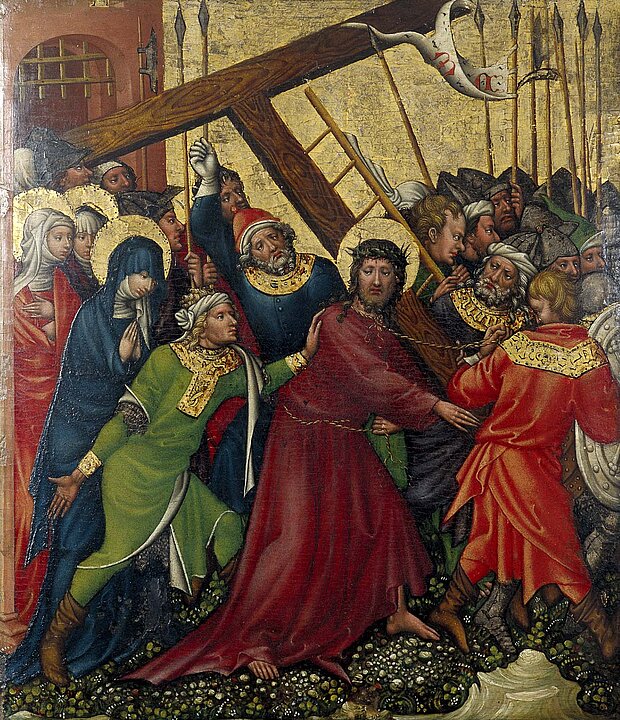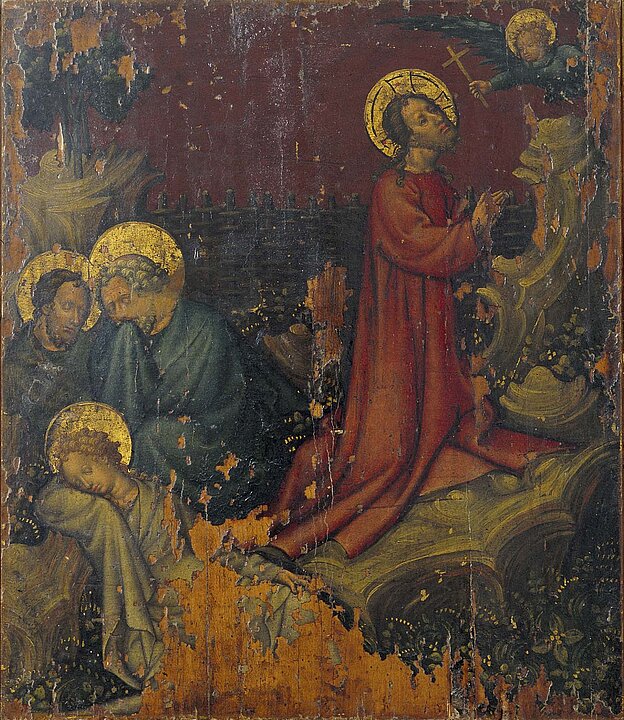The Sufferings of Christ
Jesus’ sheltered childhood is followed by the painful stations of the Cross. The arts illustrate this in unsparing realism. The depictions of the sufferings of Christ mirror the harshness of medieval legal practice. Public executions were a spectacle for the masses; human suffering was greedily cheered. Of course, the defencelessness of Christ is not a dumb passivity, but a resignation to the will of the Father. His suffering is the fulfilment of a divine plan of redemption.
Death on the Cross
The Passion of Christ is the heart of medieval piety. Numerous illustrations show Jesus’ agonising throes of death. Believers are meant to be able to reproduce his torment. They are called upon to suffer with him, to feel compassio. In his mind, the lookers-on are meant to be there among the crowd, witnessing the crucifixion on Golgotha. And in the blood thus shed, they shall see the source of their own salvation.
The Lamentation of Christ
Medieval piety with respect to the Passion of Christ produced two types of images the pietà and the Man of Sorrows. The pietà shows the deceased Christ after his Deposition from the Cross across the lap of his dolorous mother. As Man of Sorrows, Christ appears to believers in order to strengthen them like Doubting Thomas in their belief in the resurrection. As a proof of his suffering he displays the five stigmata. This imagery has a theological meaning. It stands for the church doctrine of the sacrament of the altar: during the sacrifice of the mass, Christ is present in the form of bread and wine.





























